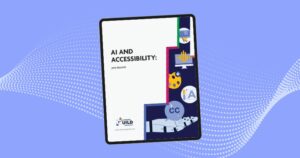Your cart is currently empty!

Buzzword Decoder: xAPI Primer

Does talk of xAPI, SCORM, and LRSs make you feel like you areswimming in alphabet soup? This primer will help you sort out key buzzwordsthat are necessary to understanding what xAPI is and how it fits witheLearning.
An API is an “application program interface”—a way for twoprograms, systems, or apps to communicate. The xAPI specification, whichis also called the Experience API—and used to be referred to as the “Tin Can”API—describes an API that can talk to all kinds of apps and tools, allowing collectionof data about learners’ activities in many different places and using manydifferent technologies.
The xAPI standard is sometimes touted as a replacement for SCORM,a widely used standard in eLearning. First released in 2001, SCORM was designedto facilitate communication between an LMS—alearning management system—and training content that was outside the LMS.
SCORM sounds a little like xAPI, no? Why change?
The xAPI standard, first released in 2013, is newer and morerobust than SCORM. It is an open standard, and it takes on some of thefunctions of SCORM. It can also do many things that SCORM cannot, such astracking a large array of formal and informal learning and work-relatedactivities.
There are some very big differences: SCORM hails from anearlier era, before mobile devices were ubiquitous and when most learning wasplanned, scheduled, and tracked using an LMS. It does not capture anything thathappens on a mobile device; in fact, SCORM only captures learning when thecontent is on the same web domain as the LMS, which rules out cloud-based eLearningas well. SCORM also tracks fewer types of activities than xAPI. It can’t trackteam activities, for example, or record multiple scores for an assessment.
As the eLearning universe has expanded to include mobilelearning and informal learning that occurs on social networks and elsewhere, SCORMwas missing more and more of the picture. Using xAPI-compatible devices offersmanagers a way to keep track of learners’ progress.
Using the metaphor of language and sentences, xAPI createsstatements describing actions taken by actors. A learner is considered anactor, and any activity he or she performs is recorded. A statement could besomething like “learner viewed video” or “learner passed assessment.”
These statements—all the data about each learner’sactivities—is compiled in something called a learning record store, or LRS,where it can be analyzed, retrieved, and evaluated. Any tool that gatherslearning data has to talk to the LRS so that data can be stored—and laterretrieved and analyzed. In fact, any tool or app that a learner uses, whetherto learn new information or to apply that information on the job, can (intheory) talk to the LRS and send it data about those activities. xAPI is thelanguage used for those conversations. It only takes an occasional Internetconnection to send xAPI statements to the relevant LRS.
Neither xAPI nor the LRS replaces the LMS; xAPI will workwith a compatible LMS and track formal training that takes place within theLMS. Within an xAPI ecosystem, the LMS and LRS can coexist, with xAPI and somethingcalled cmi5 helping them talk to each other.
So … what is cmi5? According to Art Werkenthin in “Experience API, cmi5, and Future SCORM,” xAPI is only a partial replacement for SCORM;it does not replace the scheduling or user management features of SCORM, forexample. That’s where cmi5 comes in. Billed as a “bridge,” cmi5, a new standardthat was released in June 2016, provides structure and rules for communicating dataabout formal learning that occurs in an LMS to the xAPI database.
In an xAPI ecosystem, the pieces work together to capturedata on individual learners and teams, regarding a broad range of formal andinformal learning and work-related activities. That information offers managersand eLearning developers insight into what’s working and what kinds of learningactivities successful employees have completed; it could, conceivably, helpmanagers identify who in the team might be regarded as a “guru” who couldmentor others.







